
Henry Fielding was an English novelist, irony writer, and dramatist known for earthy humour and satire. His comic novel Tom Jones is still widely appreciated. He and Samuel Richardson are seen as founders of the traditional English novel. He also holds a place in the history of law enforcement, having used his authority as a magistrate to found the Bow Street Runners, London's first intermittently funded, full-time police force.
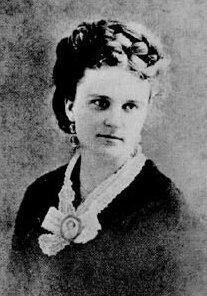
Kate Chopin was an American author of short stories and novels based in Louisiana. She is considered by scholars to have been a forerunner of American 20th-century feminist authors of Southern or Catholic background, such as Zelda Fitzgerald, and she is one of the more frequently read and recognized writers of Louisiana Creole heritage. She is best known today for her 1899 novel The Awakening.
This article contains information about the literary events and publications of 1744.

Eliza Haywood, born Elizabeth Fowler, was an English writer, actress and publisher. An increase in interest and recognition of Haywood's literary works began in the 1980s. Described as "prolific even by the standards of a prolific age", Haywood wrote and published over 70 works in her lifetime, including fiction, drama, translations, poetry, conduct literature and periodicals. Haywood today is studied primarily as one of the 18th-century founders of the novel in English.

Love in Excess (1719–1720) is Eliza Haywood's best known novel. It details the amorous escapades of Count D'Elmont, a rake who becomes reformed over the course of the novel. Love in Excess was a huge bestseller in its time, going through multiple reissues in the four years following its initial publication. It was once compared in terms of book sales with Gulliver's Travels and Robinson Crusoe. This information was later shown to be incorrect; the novel selling only about 6000 copies over 23 years.
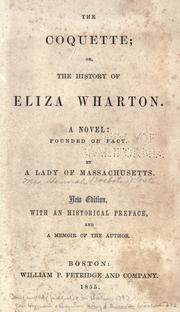
The Coquette or, The History of Eliza Wharton is an epistolary novel by Hannah Webster Foster. It was published anonymously in 1797, and did not appear under the author's real name until 1856, 16 years after Foster's death. It was one of the best-selling novels of its time and was reprinted eight times between 1824 and 1828. A fictionalized account of the much-publicized death of a socially elite Connecticut woman after giving birth to a stillborn, illegitimate child at a roadside tavern, Foster's novel highlights the social conditions that lead to the downfall of an otherwise well-educated and socially adept woman.

The Spectator was a daily publication founded by Joseph Addison and Richard Steele in England, lasting from 1711 to 1712. Each "paper", or "number", was approximately 2,500 words long, and the original run consisted of 555 numbers, beginning on 1 March 1711. These were collected into seven volumes. The paper was revived without the involvement of Steele in 1714, appearing thrice weekly for six months, and these papers when collected formed the eighth volume. Eustace Budgell, a cousin of Addison's, and the poet John Hughes also contributed to the publication.

Pamela; or, Virtue Rewarded is an epistolary novel first published in 1740 by English writer Samuel Richardson. Considered one of the first true English novels, it serves as Richardson's version of conduct literature about marriage. Pamela tells the story of a fifteen-year-old maidservant named Pamela Andrews, whose employer, Mr. B, a wealthy landowner, makes unwanted and inappropriate advances towards her after the death of his mother. Pamela strives to reconcile her strong religious training with her desire for the approval of her employer in a series of letters and, later in the novel, journal entries all addressed to her impoverished parents. After various unsuccessful attempts at seduction, a series of sexual assaults, and an extended period of kidnapping, the rakish Mr. B eventually reforms and makes Pamela a sincere proposal of marriage. In the novel's second part Pamela marries Mr. B and tries to acclimatise to her new position in upper-class society. The full title, Pamela; or, Virtue Rewarded, makes plain Richardson's moral purpose. A best-seller of its time, Pamela was widely read but was also criticised for its perceived licentiousness and disregard for class barriers. Furthermore, Pamela was an early commentary on domestic violence and brought into question the dynamic line between male aggression and a contemporary view of love. Moreover, Pamela, despite the controversies, was able to shed light on social issues that transcended the novel for the time such as gender roles, early false-imprisonment, and class barriers present in the eighteenth century. The action of the novel is told through letters and journal entries from Pamela to her parents. Richardson highlights a theme of naivety, illustrated through the eyes of Pamela. Richardson paints Pamela herself as innocent and meek to further contribute to the theme of her being short-sighted to emphasize the ideas of childhood innocence and naivety.
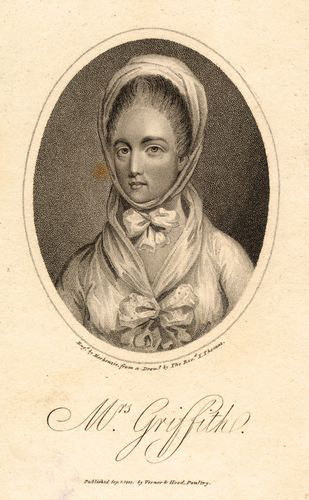
Elizabeth Griffith was an 18th-century Welsh-born dramatist, fiction writer, essayist and actress, who lived and worked in Ireland.
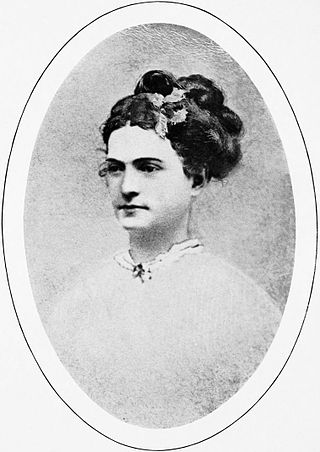
Eliza Frances Andrews was a popular Southern writer of the Gilded Age. Her works were published in popular magazines and papers, including the New York World and Godey's Lady's Book. Her longer works included The War-Time Journal of a Georgian Girl (1908) and two botany textbooks.
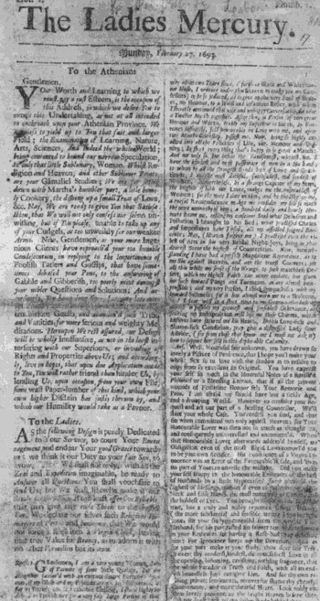
The Ladies' Mercury was a periodical published in London by the Athenian Society notable for being the first periodical in English published and specifically designed for women readers.

The Anti-Pamela; or Feign'd Innocence Detected is a 1741 novel written by Eliza Haywood as a satire of the 1740 novel Pamela; or, Virtue Rewarded by Samuel Richardson. It has also been presented with the subtitle "Mock-Modesty Display'd and Punish'd."
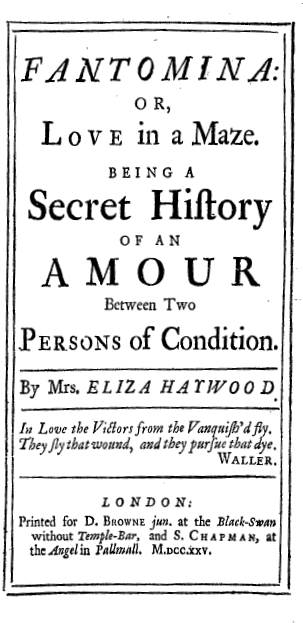
Fantomina; or, Love in a Maze is a novel by Eliza Haywood published in 1725. In it, the protagonist disguises herself as four different women in her efforts to understand how a man may interact with each individual persona. Part of the tradition of amatory fiction is to rewrite the story of the persecuted maiden into a story of feminine power and sexual desire.

The Tatler was a British literary and society journal begun by Richard Steele in 1709 and published for two years. It represented a new approach to journalism, featuring cultivated essays on contemporary manners, and established the pattern that would be copied in such British classics as Addison and Steele's The Spectator, Samuel Johnson's The Rambler and The Idler, and Goldsmith's Citizen of the World. The Tatler would also influence essayists as late as Charles Lamb and William Hazlitt. Addison and Steele liquidated The Tatler in order to make a fresh start with the similar Spectator, and the collected issues of Tatler are usually published in the same volume as the collected Spectator.

Matilda Mary Hays was a 19th-century English writer, journalist and part-time actress. With Elizabeth Ashurst, Hays translated several of George Sand's works into English. She co-founded the English Woman's Journal. Her love interests included the actress Charlotte Cushman, with whom she had a 10-year relationship, and the poet Adelaide Anne Procter.
The Lady's Museum was a monthly magazine published in the United Kingdom between 1760 and 1761.
The Shakespeare Ladies Club refers to a group of upper class and aristocratic women who petitioned the London theatres to produce William Shakespeare's plays during the 1730s. In the 1700s they were referred to as "the Ladies of the Shakespear’s Club," or even more simply as "Ladies of Quality," or "the Ladies." Known members of the Shakespeare Ladies Club include Susanna Ashley-Cooper, Elizabeth Boyd, and Mary Cowper. The Shakespeare Ladies Club was responsible for getting the highest percentage of Shakespeare plays produced in London during a single season in the eighteenth century; as a result they were celebrated by their contemporaries as being responsible for making Shakespeare popular again.

Kirsten Saxton is a Professor of English at Mills College in Oakland, California where she is also the director of the MA of English.
The Humming Bird, or Herald of Taste was an American women's magazine published in 1798. It is the first known magazine in the United States edited by a woman, for women.















